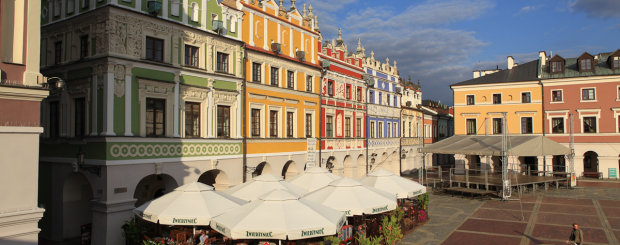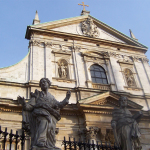UNESCO World Heritage Sites in Poland
The beginning of the List of World Cultural Heritage dates back to 1968, when experts of the United Nations gathered in Paris and began to invent the criteria that would help to find and protect valuable objects and places in the world. In 1972 in Paris, the “Convention on the Protection of the World Cultural and Natural Heritage” was adopted. Among the countries that have accepted it, was also Poland. Adding a location or object to this list is a prestigious event, but also a decision about a permanent state care of them. Poland may boast of 14 objects placed on the UNESCO World Heritage Site.
Malbork Castle is the largest castle in Poland. Thirteenth-century monastery of the Teutonic Knights was expanded after 1309, when office of Grand Master moved from Venice to Malbork. Then medieval castle fell into disrepair, but was meticulously restored in the late nineteenth and early twentieth century. The Second World War has also left marks on it, but the castle was restored again.
Gothic medieval urban complex of Torun. Teutonic Knights built here a castle in XIIIth century. City belonged to the Hanseatic League and soon began to play an important role in the Polish trade. Its rank provide many Gothic buildings and Torun is even promoted by the slogan: “Gothic in touch.”
Old Town in Warsaw. During the Warsaw Uprising, the city was almost razed to the ground by the Germans. In August 1944 more than 85% of the buildings of the Old Town were destroyed by the Nazis. After the war, churches, palaces, houses and the Town Square were carefully restored. It is a unique example of almost complete restoration of monuments from the uninterrupted series of historical, from the thirteenth to the twentieth century.
Exceptional Bialowieza National Park is situated on the territory of the Poland and Belarus. There is the last bison reserve and huge natural forest. This forest is one of the last and largest remaining parts of the immense primeval forest that once stretched across the European Plain and it is called “The lungs of Europe”. The forest is inhabited by bisons, that are heaviest animals of Europe. It has been designated at UNESCO World Heritage Site, UNESCO Biosphere Reserve and an EU Natura 2000 Special Area of Conservation.
Renaissance Old Town in Zamosc. The city was founded in the sixteenth century by Chancellor Jan Zamoyski, on the trade route between Europe and North Western Black Sea. Zamosc, is a unique example of a Renaissance town in Central Europe, consistently designed and built in accordance with the Italian theories of the “ideal town,” on the basis of a plan which was the result of perfect cooperation between the open-minded founder, Jan Zamoyski, and the outstanding architect, Bernardo Morando. Is an excellent example of a city that has preserved the original plan, fortifications and numerous buildings, e.g. town hall, cathedral, synagogue and arsenal.
16 wooden Eastern Orthodox churches in the Polish and Ukrainian Carpathian Region, eight of which are in Poland and eight in Ukraine. They were built from the sixteenth to the nineteenth century as the Orthodox churches and the Greek-Catholic churches. Within the areas listed in UNESCO List there are also wooden bell towers, cemeteries and gate and inside the church – iconostasis and murals. Polish churches include the Orthodox churches in Radruz, Chotyniec, Smolnik, Turzansk. Powroznik, Owczary, Kwiaton, Brunary Wyżne.
Wooden churches of Southern Lesser Poland in Binarowa, Blizne, Debna, Haczow, Lipnica Murowana and Sekowa. The beautiful wooden churches of Lesser Poland represent a unique example of different architectural traditions of medieval churches in the Roman Catholic culture. For their construction technique was used framework, common in Northern and Eastern Europe since the Middle Ages. Churches were built by noble families and were a symbol of prestige.
Royal Salt Mines in Wieliczka and Bochnia. Salt in Wieliczka is extracted from the thirteenth century. The mine extends over 9 levels and has 360 km of sidewalks. Valuable cultural monuments are carved in salt altars, statues and other works of art. Today, Wieliczka Salt Mine combines many centuries of tradition and modernity, the history of several hundred years and an underground metropolis with extensive infrastructure.
Historic Mine in Bochnia have 3 pits: Sutoris (from the thirteenth century.), Campi (from the mid-sixteenth century) and Trinitatis (from the beginning of the twentieth century.) And nine levels, located underground. Precious legacy of faith Bochnians miners are underground chapels and places of worship.
Old Town in Krakow is on the World Heritage List since 1978. Krakow is a very old city and has a city rights since 1257. The area included on the list include the Old Town within its historic walls, Wawel Castle and Kazimierz district with Stradom. Krakow has Europe’s largest medieval market square, numerous historic buildings and churches. The glorious past of Krakow provide fragments of the fourteenth-century city walls, located in the south of the city Jewish district of Kazimierz, the historic synagogues, Jagiellonian University and the Wawel Cathedral, where Polish kings are buried.
Mannerist Architectural and Landscape and Pilgrimage Park Kalwaria Zebrzydowska. Kalwarias picturesque landscape strikes us about the pronunciation of spiritual culture. Kalwaria Zebrzydowska is still a pilgrimage place. There is a Marian shrine and the Way of the Cross with its 42 churches and chapels, called Polish “Via Dolorosa”, or Golgotha, built in the seventeenth century by Zebrzydowski family.
Nazi Concentration and Extermination Camp Auschwitz-Birkenau from 1940-1945. A symbol of a planned genocide, and the Holocaust. Barbed wire, gallows, barracks, watchtowers, gas chambers and crematoria testify to the terrible conditions in which the Nazi genocide took place in the former concentration and extermination camp Auschwitz-Birkenau, the largest in the Third Reich. In this camp, systematically starved, tortured and killed about 1.5 million people.
Centennial Hall in Wroclaw is building a breakthrough in the history of architecture using reinforced concrete. It was built in the years 1911-1913 by the architect Max Berg in Centennial Exhibition areas as a multi-purpose building serving recreation. Centennial Hall is a pioneering solution in terms of architecture and engineering, documenting the intermingling of different influences in the early years of the twentieth century. Hall has a huge cylindrical auditorium for about 6,000 people.
Churches of Peace in Jawor and Swidnica were built after the Peace of Westphalia in 1648 which permitted the Lutherans living in the Roman Catholic parts of Silesia to build Evangelical churches made from wood, loam and straw, without towers and bells.
The Muskau Park with an area of 559.90 hectares, but the facility also includes a reconstructed castle, bridges and arboretum. Park extends on both sides of the River Nysa, which runs along the Polish and German border. It was created by Prince Hermann von Pückler-Muskau between 1815-1844. Utopian park, initiated a new approach to landscape design and influenced the development of park architecture in Europe and America. Designed as a “picture painted by a plants” did not refer to the neoclassical landscape ideas of Eden, but used the local vegetation to emphasize qualities of the existing landscape.






